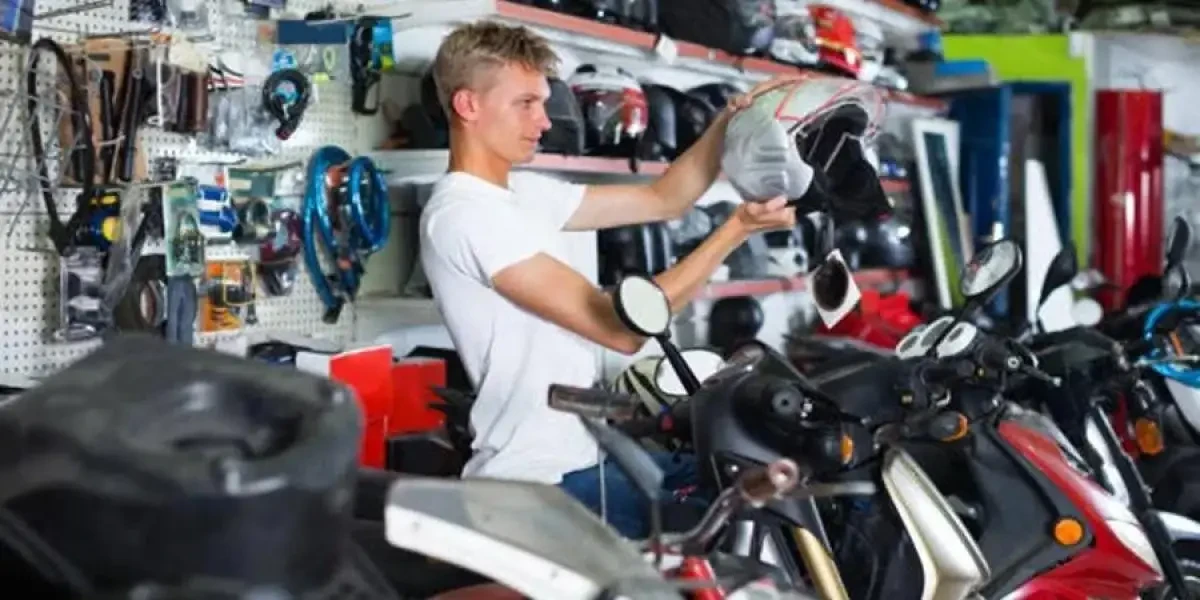Leading MX Gear NZ: Gear Up for Your Following Off-Road Adventure
Leading MX Gear NZ: Gear Up for Your Following Off-Road Adventure
Blog Article
Mastering Motorcycle Gears: Just How to Optimize Your Riding Experience
In the world of motorcycling, grasping the art of gear adjustment is important for improving your riding performance. Properly making use of and recognizing motorcycle gears can dramatically affect acceleration, control, and gas effectiveness, transforming a typical trip into a seamless, electrifying trip. By integrating precise change timing and adapting equipment choice to various roadway conditions, cyclists can guarantee ideal engine efficiency and safety. The subtleties of clutch control, throttle coordination, and equipment technicians bid a much deeper exploration, promising to open the complete capacity of your machine. Just how can these strategies be used to truly enhance your riding experience?
Recognizing Gear Mechanics
At the core of bike characteristics, gear auto mechanics play a critical role in transforming engine power right into movement, eventually dictating speed and control. The equipment ratios, carefully designed, establish the connection between engine changes and wheel turns, influencing acceleration and fuel performance.
Recognizing equipment technicians begins with identifying the importance of the transmission, which houses numerous gears of differing sizes. These equipments engage with a procedure called meshing, where teeth of different gears engage to send power. The precision of this interaction is critical; any imbalance or damage can bring about ineffective power transfer, hindering efficiency. Additionally, the setup and dimension of gears affect the bike's capability to handle different loads and rates.
Furthermore, the principle of equipment shifting is essential to optimizing performance. Prompt and smooth shifts guarantee that the engine runs within its optimum power band, avoiding unneeded strain and improving long life (motorbike shop). By understanding these mechanical intricacies, bikers can accomplish an unified mix of performance, control, and power, elevating their riding experience
Timing Your Shifts
Shift timing mastery is vital for enhancing bike performance and boosting the riding experience. Effectively timed shifts ensure that the engine operates within its optimal power band, which is essential for preserving control, accomplishing smooth velocity, and ensuring the long life of the bike. Cyclists should establish an intuitive sense of when to change equipments, which involves comprehending the connection between engine revolutions per minute (RPM) and rate.
To understand change timing, pay attention to the engine's noise and really feel, as these give essential ideas regarding when to alter gears. The perfect shift factor normally takes place when the engine approaches the upper range of its power band without reaching the redline. Moving too early can result in a lack of power, while moving far too late might create unneeded engine pressure
Additionally, road problems and riding style impact change timing. In metropolitan setups, smoother and much more regular shifts might be necessary to navigate web traffic successfully. In comparison, during highway riding, fewer changes at higher rates can be much more ideal. Practicing in different environments will certainly boost your capability to time changes precisely, inevitably elevating your riding experience to an expert degree.
Enhancing Gas Efficiency
While grasping bike gears is critical for performance, improving fuel efficiency is similarly vital for both economic and environmental factors. Optimal fuel usage not just reduces operational expenses however additionally minimizes the eco-friendly footprint of riding. To achieve this, one need to comprehend the detailed relationship between gear selection and engine performance.
First of all, choosing the appropriate equipment at ideal rates can significantly impact fuel consumption. Riding in a higher gear at reduced speeds can cause engine hauling, which is harmful to both gas economic situation and engine wellness. Alternatively, riding in reduced equipments at high rates causes unneeded gas consumption. Therefore, preserving an ideal balance by shifting gears abreast with roadway problems and prepared for maneuvers is crucial.
In addition, normal upkeep plays a critical role in gas effectiveness. Making certain that the motorbike is well-tuned, with clean air filters and properly pumped up tires, can reduce and boost the rules of aerodynamics gas waste. Embracing a riding style that embraces steady velocity and smooth slowdown can contribute to far better fuel economy.

Methods for Smooth Transitions
Accomplishing smooth equipment transitions is essential to improving the riding experience and making sure the durability of a bike's transmission system. Appropriate gear changing not only adds to a seamless adventure however also decreases deterioration on the mechanical parts. To master the art of smooth transitions, cyclists need to concentrate on a couple of vital methods.

Second of all, clutch control plays an essential role. Engaging and disengaging the clutch efficiently requires technique. The clutch bar ought to be released slowly, permitting a smooth transfer of power from the engine to the wheels without creating a jolt or abrupt movement.

Adjusting to Roadway Conditions
Browsing varied roadway conditions is an important ability for any motorcyclist aiming to keep control and safety and security. Whether you're riding on damp surface areas, gravel roads, or browsing sharp turns, your capability to adjust your equipment use and riding strategy is critical. Recognizing how to adjust your equipments properly can considerably impact grip and security, guaranteeing a safer trip.
In comparison, when riding on gravel or unequal terrain, lower gears are preferable. Lower equipments supply much better control and enable you to respond Read More Here even more promptly to unforeseen modifications in the road surface.
Sharp contours demand exact gear administration to stabilize speed and useful content control. Downshifting prior to entering a curve can aid maintain energy while ensuring the motorbike continues to be stable throughout the turn. Constant method in varied problems improves your ability to forecast and respond to modifications in road appearance and incline.
Final Thought
Understanding motorcycle gears substantially boosts the riding experience by improving fuel, control, and acceleration efficiency. A complete understanding of equipment mechanics and exact change timing makes certain the engine runs within its optimal power band, while smooth transitions with reliable clutch and throttle coordination increase comfort and performance. Adjusting equipment option to various road problems, such as making use of greater equipments on wet surface areas and lower equipments on gravel, further improves handling and security. Inevitably, these skills boost the general trip.
Understanding gear mechanics starts with identifying the relevance of the gearbox, which houses several equipments of varying sizes. These gears communicate with a procedure recognized as meshing, where teeth of various equipments involve to transfer power (motorbike shop). Mild adjustments to the throttle during equipment shifts can avoid jerky motions and keep a regular riding pace
Whether you're riding on damp surfaces, crushed rock roadways, or navigating sharp turns, your capacity to adapt your equipment usage and riding strategy is vital. Adapting equipment option to various roadway conditions, such as making use of higher equipments on wet surface areas and lower equipments on gravel, additional enhances handling and safety.
Report this page